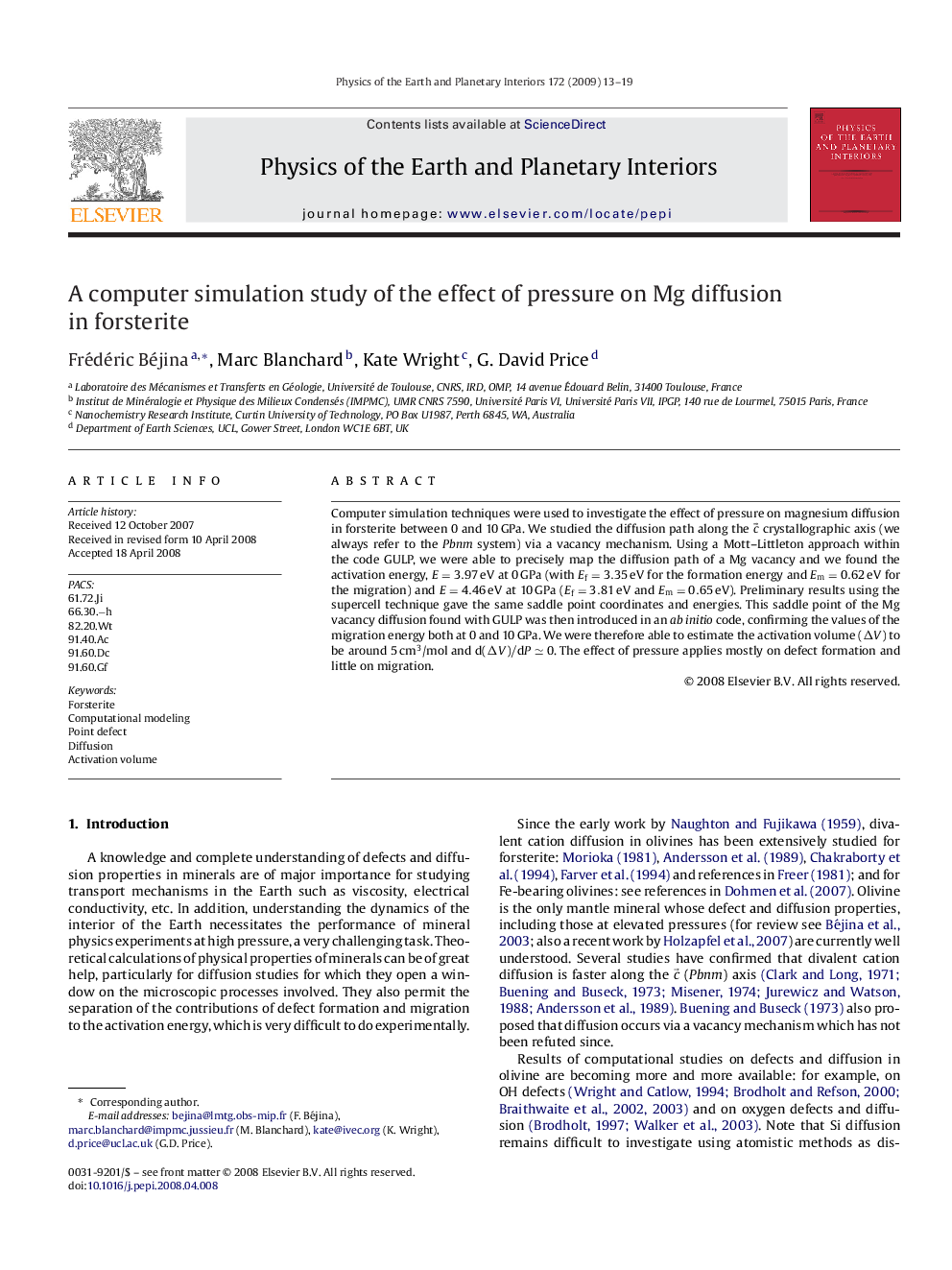| Article ID | Journal | Published Year | Pages | File Type |
|---|---|---|---|---|
| 4742227 | Physics of the Earth and Planetary Interiors | 2009 | 7 Pages |
Computer simulation techniques were used to investigate the effect of pressure on magnesium diffusion in forsterite between 0 and 10 GPa. We studied the diffusion path along the c→ crystallographic axis (we always refer to the Pbnm system) via a vacancy mechanism. Using a Mott–Littleton approach within the code GULP, we were able to precisely map the diffusion path of a Mg vacancy and we found the activation energy, E=3.97E=3.97 eV at 0 GPa (with Ef=3.35Ef=3.35 eV for the formation energy and Em=0.62Em=0.62 eV for the migration) and E=4.46E=4.46 eV at 10 GPa (Ef=3.81Ef=3.81 eV and Em=0.65Em=0.65 eV). Preliminary results using the supercell technique gave the same saddle point coordinates and energies. This saddle point of the Mg vacancy diffusion found with GULP was then introduced in an ab initio code, confirming the values of the migration energy both at 0 and 10 GPa. We were therefore able to estimate the activation volume (ΔV) to be around 5 cm3/mol and d(ΔV)/dP≃0. The effect of pressure applies mostly on defect formation and little on migration.
